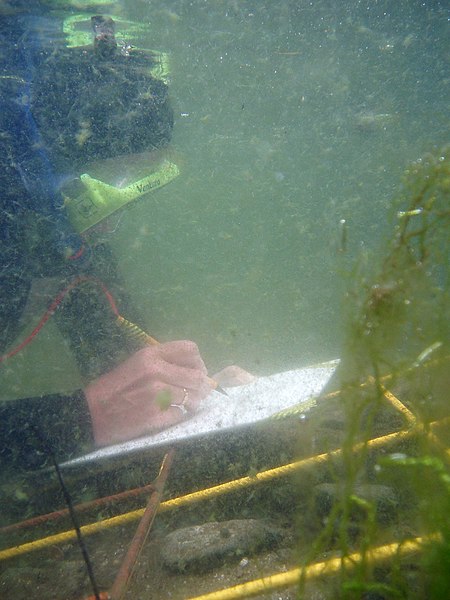A diving support vessel is a ship that is used as a floating base for professional diving projects. Basic requirements are the ability to keep station accurately and reliably throughout a diving operation, often in close proximity to drilling or production platforms, for positioning to degrade slowly enough in deteriorating conditions to recover divers without excessive risk, and to carry the necessary support equipment for the mode of diving to be used.
CSV Skandi Singapore departing Fremantle, Australia
The 2015 launched DSV Curtis Marshall
Gulmar Da Vinci in Albert Dock
The Skandi Arctic supply vessel in Leith docks
Professional diving is underwater diving where the divers are paid for their work. Occupational diving has a similar meaning and applications. The procedures are often regulated by legislation and codes of practice as it is an inherently hazardous occupation and the diver works as a member of a team. Due to the dangerous nature of some professional diving operations, specialized equipment such as an on-site hyperbaric chamber and diver-to-surface communication system is often required by law, and the mode of diving for some applications may be regulated.
A US Navy diver at work. The umbilical supplying air from the surface is clearly visible.
Surface supplied commercial diving equipment on display at a trade show
A scientific diver at work
US Navy Clearance Divers defusing a MK17 Buoyant Mine








